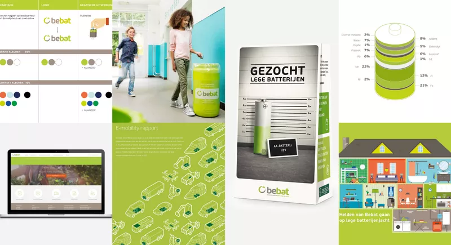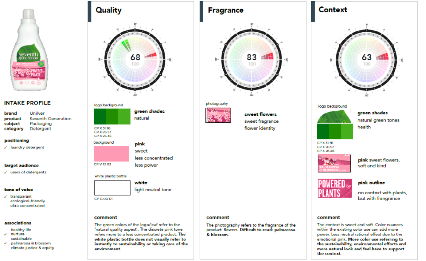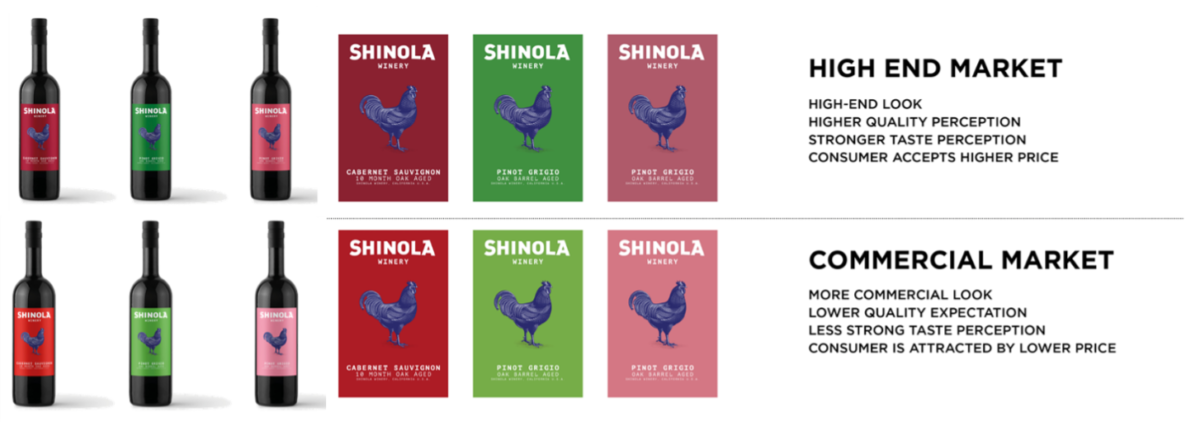Nobel Prize winner Daniel Kahneman showed that most of the decisions we make on a daily basis, are made rather unconsciously, and color is the dominant factor in 85% of cases! So when consumers judge a brand or product, color plays an important role. Working with the right colors can therefore boost a company’s results. Yet color is heavily underestimated by most companies. By using the right color combinations and color nuances in a brand logo, packaging, website or advertisement, you can generate much more impact and respond much better to consumer’s desires and expectations. On top, color is the key element within brand distinct assets which are crucial for brand preference.
For example, Google set up several experiments to decide what color blue they should use on advertising links in Google Search and Gmail. Consequently, they’ve learned that a more purple shade of blue was more conducive to clicking through than a slightly greener shade of blue. This insight and the implementation of the right color blue earned the company an additional $200 million in revenue
Science & research: there is no debate about color.
Often marketer or graphic designers decide what colour to use based on what they like, whereas today more than ever it’s about measuring and knowing. And it’s important to not only take care of what consumers tell us. However well-intentioned, consumers often struggle to formulate relevant answers to the questions companies ask them. In this sense, it’s important to make use of pre-existing data and knowledge, behavioural economic principles, and scientifically based color expertise as well as consumer research. After all, colors can be warm versus cool, or activating versus calming, and you can also play with light versus dark. By linking the impact and meaning of colors to other market research data, we get closer to consumer’s thought s and feelings
Augmenting insights with color science.
The addition of scientifically based color expertise is extremely relevant in brand, communication and packaging research, but also when we want to segment consumers or research new concepts.
A visual identity that exudes the values of the brand
The first step in developing a strong visual brand identity is to get the “brand purpose” right, the brand story and brand values, using consumer insights and macro trends. To determine the visual identity, brands often stare blindly at their logo colors, often unaware of the importance of brand context colors. Context colors are complementing the logo colors for a brand, defining the main identity of any online or offline communication. The main and context colors should be chosen on the basis of the emotional charge and associations that these colors generate on an unconscious level, also matching the brand’s values

Enriching communication & packaging research
The same applies to communication and packaging research where, in addition to exploring the desired message or tone-of-voice, we determine which visual color identity should be associated with it to increase all touchpoint’s performance and conversion. Specific colors and their matching associations are able to nudge people towards specific choices and behaviors.
A color audit of an existing packaging often shows there’s room for improvement, and that not all colors used are effective. For example, in the Seventh Generation example, we note that the type of pink used does not reflect the product benefit “ultra-concentrated”, and that a different shade of pink is appropriate.

In the search for the most impactful packaging, we’re moving away from expensive and long research processes. For example, we combine consumer research with predictive eye-tracking and color science to validate whether packaging stands out and whether the most important elements receive enough attention. Our efficient technological solution is able to predict, based on more than 20,000 experiments, 1.6 million eye tracking data points, and a smart AI algorithm, what people are looking at during the first 3 important seconds of stimulus exposure, with 90%+ accuracy . This allows us to test and optimize different executions in a quick and iterative way.

Colour as an implicit research tool for segmentation and concept development
Finally, we also inject the richness of colors into segmentation and concept research. Based on intuitive and unconscious color preferences, we can segment and link consumers to brand personas, or provide input to marketing and R&D what functional and emotional benefits should be stressed and what visual color identity should go with it.
For example, research shows that people generally divide wine into two categories:
1. Wine that is rich and complex in taste, which is drunk on special occasions or fits well with specific dishes. This wine is usually more expensive.
2. Wine that’s softer in taste, accessible, easy to drink together with friends and more accessible in price. Depending on the desired product or brand positioning, a winemaker can respond to it by using the right colors in all touchpoints, including bottle labels. Just look at the wine bottles and the colors of the labels in the client case below.
Consumers believe that the quality perception, taste intensity and price expectation of the wines in the concept of ‘High End’ exceeds that of the ‘Commercial’ wines. However, if you want to be accessible and uncomplicated as a brand or product, the ‘commercial’ labels are the better option.

Colors make all the difference
It’s clear that colors can make a huge difference. When we combine color expertise and market research, we achieve better results. The right choice of colors and color combinations leads to a stronger visual identity, a greater impact on consumers and positive long-term results for brands.


